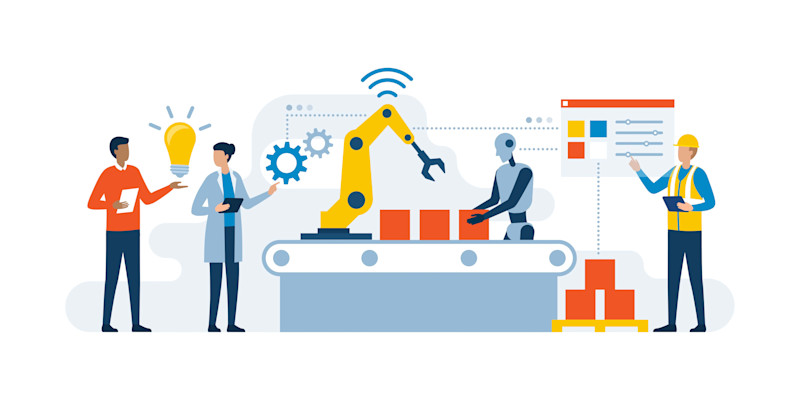TECHNOLOGY
To Be Current Is To Be Stale
The velocity of technology development is accelerating. Is this a good thing? Only if the technologies can be adopted at the same pace. Luckily, as we saw at IMTS, implementation and use is becoming easier as human-to-machine interfaces grow more intuitive than ever. However, this format will not last, as the ever-changing workforce will drive new interfaces and controls. As mechanical systems and controls become more precise, accurate, and faster, what controls them should as well. The benefit for business will be a faster time to market. Can you reduce the number of setup pieces if your confidence in the program is high enough? Can you program a robot on the fly for the 10 different part numbers you are running today?
INTELLIGENCE
Talk of Recession
Labeling a “recession” serves as a convenient way for economists to succinctly summarize the troubling economic underpinnings of a period of unfavorable business conditions. At MTForecast 2022, sentiment was mixed among economists regarding the United States entering a recession. Oxford Economics’ Mark Killion claimed a mild recession was unavoidable in 2023, while Charles Gascon of the Federal Reserve Bank didn’t believe it was a foregone conclusion.
Determining a recession is not as simple as monitoring for two consecutive quarters of real GDP contraction. In fact, a committee sanctioned by the National Bureau of Economic Research is officially responsible. They interpret several economic factors to define the start and end of a recession. The last three recessions corresponded to a 23% decline in manufacturing technology order values. However pessimistic recession commentary may sound, it efficiently communicates otherwise complex economics, affording executives time to plan for the start and duration of a slowdown in their businesses.
SMARTFORCE
Smart Technology, Automation, Teacher Training, and Curriculum at IMTS 2022
Automation, robotics, and smart digital manufacturing technologies are widely recognized as the key solutions to the current labor shortage in U.S. manufacturing, and those technologies were on full display during the Smartforce Student Summit at IMTS. Educators and students were able to experience more than 80 robots, many of which come with teacher training, curriculum, and industry certifications; nearly a dozen virtual reality displays, including many that focused on robotics; and examples of cyber-physical factory training solutions.
Teacher training, curricula, and industry certifications will be critical in solving the shortage of career and technical education teachers, the foundational point of engagement to solve the labor shortage. For more information, visit IMTS.com/Smartforce.
INTERNATIONAL
Preparing for the Next Level of Global Exigence
The world keeps turning. Seeing positive economic indicators paired with labor and supply chain challenges is unusual, but this is the state of the manufacturing industry in 2022. A vigorous economic recovery was on track until a combination of labor and geopolitical issues grew, and optimism around revenue growth and prosperity was held in check by caution from those ongoing risks. Workforce shortages now threaten operational efficiency, margins, and stability. More turbulence, geopolitical issues, and war are building complexity in an environment that’s already challenging to navigate. As leaders look to defend against disruption, they must make aggressive plans to fight talent scarcity, rising threats, and future disruptions, as well as adopt digital technology and advance sustainability agendas. Do you want to know more about the challenges and opportunities in different global markets? Reach out to AMT to explore possibilities around the world.
ADVOCACY
Midterms Are Over. What’s Next in Congress?
Now that the elections are over, the 117th Congress has one more task to complete before it adjourns: funding the government for the remainder of fiscal year 2023, which began Oct. 1. The funding bill could present an opportunity to address two tax issues at the top of AMT’s priorities. The first is to delay or repeal the requirement to amortize R&D expenses beginning in 2022 without the option to deduct them in the year they are incurred. There is substantial bipartisan support for delaying its implementation, but sponsors of the provision have been unsuccessful in including it in other legislation that has since been enacted. Secondly, this is the last year for 100% bonus depreciation before it begins phasing out in 2023. AMT has been a champion of first-year expensing of capital equipment purchases since it was first enacted a decade ago and continues to advocate for its permanence. The 118th Congress convenes in January with a clean slate. Lawmakers must reintroduce any legislation previously considered to get on the agenda.






